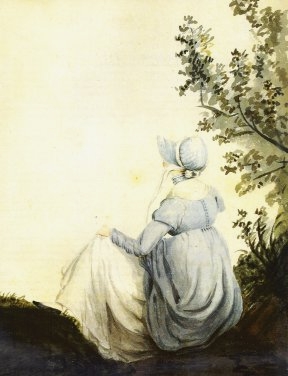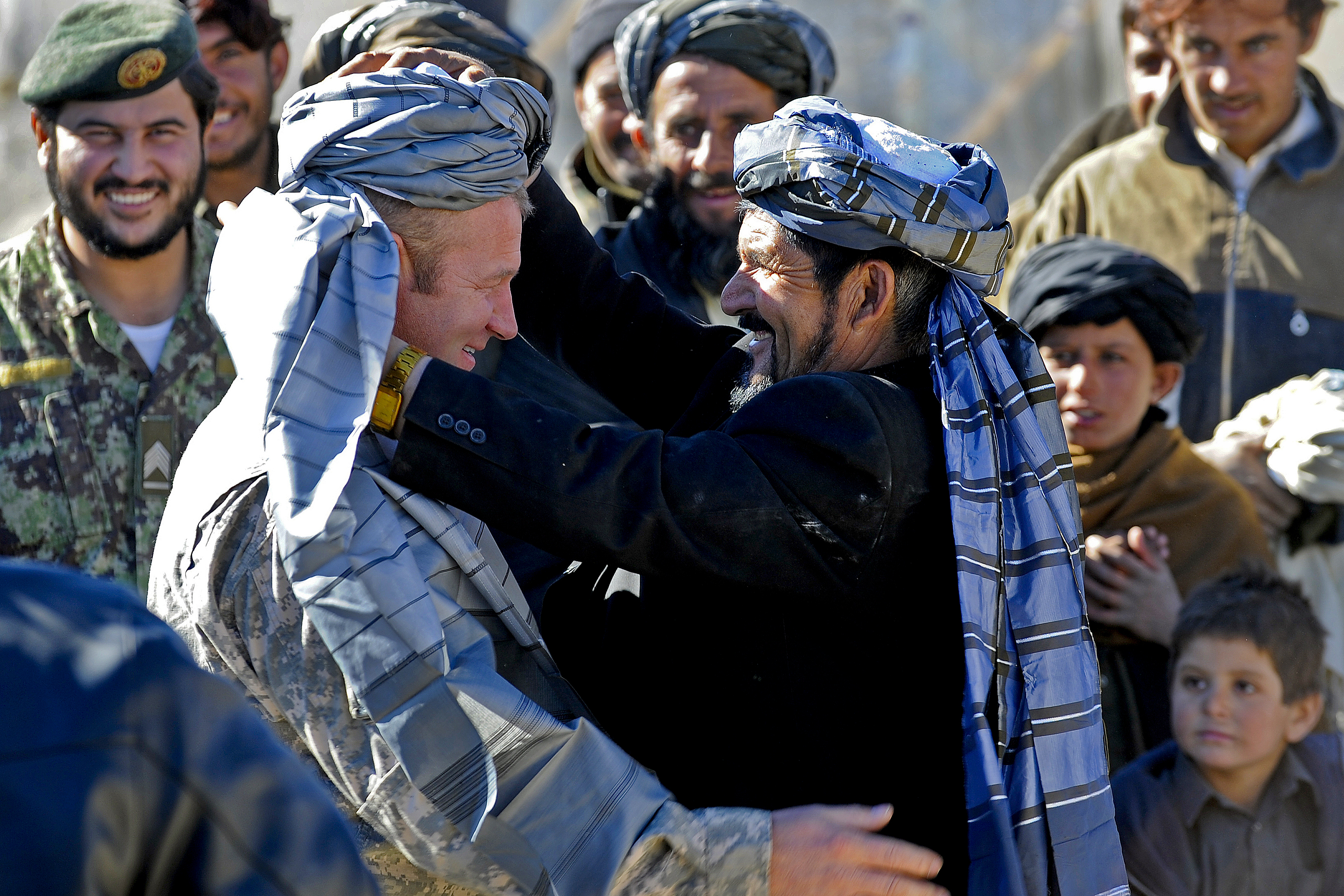|
Shikla
A shikla or shakila (), also known under the name ''alama'' () is a piece of clothing that the Jews of Tunisia were forced to wear to distinguish themselves from Muslim residents. The shikla was primarily worn, with some interruptions, between the 9th and 19th century in Tunisia and at times also in the rest of the Magrheb. Etymology The word comes from the Jewish surname Bou Shikla, which signifies "one who wears a ring".. History 9th to 12th century From the ninth century onwards, Islamic authorities begun to harden with respect to ''ghiyār'', or the differentiating of non-Muslims from Muslims. As such, al-Mutawakkil ordered that dhimmis (Christians and Jews) wear additionally to the already existing zunnar a honey-coloured outer garment and batch-like patches on their servants' clothing. Thus begun the tradition to differentiate ''dhimmis'' by colour. This approach was also followed in the Maghreb where the semi-independent Aghlabids introduced similar rules around th ... [...More Info...] [...Related Items...] OR: [Wikipedia] [Google] [Baidu] |
History Of The Jews In Tunisia
The history of the Jews in Tunisia dates back nearly two thousand years to the Ancient Carthage, Punic era. The Jewish community of Tunisia grew following successive waves of immigration and proselytism before its development was hampered by the imposition of anti-Jewish measures in the Byzantine Empire in late antiquity. After the Muslim conquest of the Maghreb, Muslim conquest of Tunisia, Tunisian Jews experienced periods of relative freedom or cultural apogee which were followed by periods of more marked discrimination and persecution; under Muslim rule, Jews were granted legal status as dhimmi, which legally assured protections of life, property, and freedom of religion, but imposed an increased Jizya, tax burden on them. The community developed Judeo-Tunisian Arabic, its own dialect of Arabic, but the use of Judeo-Tunisian Arabic has declined due to the community's relocation from Tunisia.Bassiouney, R. (2009). ''Arabic sociolinguistics''. Edinburgh University Press, pp. 104. ... [...More Info...] [...Related Items...] OR: [Wikipedia] [Google] [Baidu] |
Ifriqiya
Ifriqiya ( '), also known as al-Maghrib al-Adna (), was a medieval historical region comprising today's Tunisia, eastern Algeria, and Tripolitania (roughly western Libya). It included all of what had previously been the Byzantine province of Africa Proconsularis and extended beyond it, but did not include the Mauretanias. To the south, Ifriqiya was bounded by the semi-arid lands and salt marshes named el-Djerid. The northern boundary fluctuated from as far north as Sicily to the North African coastline, and the western boundary usually reached Béjaïa. Ifriqiya is bordered to the west by the Central Maghreb, with which the borders are fluid depending on the chroniclers and the eras. The capital was briefly Carthage, then Kairouan, Qayrawan (Kairouan), then Mahdia, then Tunis. The Aghlabids, from their base in Kairouan, initiated the invasion of Southern Italy beginning in 827, and established the Emirate of Sicily, which lasted until it was conquered by the Normans, and the s ... [...More Info...] [...Related Items...] OR: [Wikipedia] [Google] [Baidu] |
Bonnet (headgear)
Bonnet has been used as the name for a wide variety of headgear for both sexes—more often female—from the Middle Ages to the present. As with "hat" and "cap", it is impossible to generalize as to the styles for which the word has been used, but there is for both sexes a tendency to use the word for styles in soft material and lacking a brim, or at least one all the way round, rather than just at the front. Yet the term has also been used, for example, for steel helmets. This was from Scotland (in 1505), where the term has long been especially popular.''OED'', "Bonnet" Headgear tied under the chin with a string was especially likely to be called a bonnet. Other features associated with bonnets as opposed to hats was that the forehead was not covered, and the back of the head often was. The outdoor headgear of female servants and workers was more likely to be called a bonnet. It was often worn outside over a thinner everyday head covering, which was worn at all times. Hats we ... [...More Info...] [...Related Items...] OR: [Wikipedia] [Google] [Baidu] |
Beylik Of Tunis
The Beylik of Tunis () was a de facto independent state located in present-day Tunisia, formally part of the Ottoman Empire. It was ruled by the Husainid dynasty from 1705 until the establishment of the French protectorate of Tunisia in 1881. The term ''beylik'' refers to the monarch, who was called the Bey of Tunis. Under the protectorate, the institution of the Beylik was retained nominally, with the Husainids remaining as largely symbolic sovereigns. The Beys remained faithful to the Sublime Porte, but reigned as monarchs after gradually gaining independence from the Ottoman Empire. Between 1861 and 1864, the Beylik of Tunis became a constitutional monarchy after adopting the first constitution in Africa and the Arab world. The country had its own currency and an independent army, and in 1831 it adopted its flag, which is still in use today. The institution of the Beylik was finally abolished one year after independence on 25 July 1957 when the republic was declared. Histor ... [...More Info...] [...Related Items...] OR: [Wikipedia] [Google] [Baidu] |
Kippah
A (plural: ''kippot''), , or is a brimless Jewish cap, skullcap, usually made of cloth, traditionally worn by Jewish men to fulfill the customary requirement that the Head covering, head be covered. It is the most common type of head-covering worn by men in Orthodox Judaism, Orthodox Jewish communities during Jewish prayer, prayers and by most Orthodox Jewish men at most other times. Among non-Orthodox Jewish individuals, some wear them at most times, while most wear them only during prayer, while attending a synagogue, or at other ceremonies, and others wear them rarely or never. Etymology The term () literally means "dome" as the kippah is worn on the head like a dome. The Yiddish term () might be derived from the Polish language, Polish or the Ukrainian language, Ukrainian and perhaps ultimately from the Medieval Latin ("cowl" or "hood"). The word is often associated with the phrase (), formed from the Aramaic word for 'king' and the Hebrew root , meaning 'fear'. ... [...More Info...] [...Related Items...] OR: [Wikipedia] [Google] [Baidu] |
Sleeve
A sleeve (, a word allied to '' slip'', cf. Dutch ) is the part of a garment that covers the arm, or through which the arm passes or slips. The sleeve is a characteristic of fashion seen in almost every country and time period, across a myriad of styles of dress. Styles vary from close-fitting to the arm, to relatively unfitted and wide sleeves, some with extremely wide cuffs. Long, hanging sleeves have been used variously as a type of pocket, from which the phrase "to have up one's sleeve" (to have something concealed ready to produce) comes. There are many other proverbial and metaphorical expressions associated with the sleeve, such as "to wear one's heart upon one's sleeve", and "to laugh in one's sleeve". Early Western medieval sleeves were cut straight, and underarm triangle-shaped gussets were used to provide ease of movement. In the 14th century, the rounded sleeve cap was invented, allowing a more fitted sleeve to be inserted, with ease around the sleeve head and a ... [...More Info...] [...Related Items...] OR: [Wikipedia] [Google] [Baidu] |
Tunic
A tunic is a garment for the torso, usually simple in style, reaching from the shoulders to a length somewhere between the hips and the ankles. It might have arm-sleeves, either short or full-length. Most forms have no fastenings. The name derives from the Latin '' tunica'', the basic garment worn by both men and women in Ancient Rome, which in turn was based on earlier Greek garments that covered wearers' waists. The term is likely borrowed from a Semitic word *''kittan'' with metathesis. The word khiton () is of the same origin. Ancient era Roman tunic The Roman ''tunica'' was adopted by Roman citizens in the 3rd century BCE. It was often worn by Roman citizens and by non-citizens alike. However, citizens might wear it under the toga, especially at formal occasions. The length of the garment, the presence or lack of stripes, as well as their width and ornamentation, would indicate the wearer's status in Roman society. Roman senators, for example, used the '' laticla ... [...More Info...] [...Related Items...] OR: [Wikipedia] [Google] [Baidu] |
Turban
A turban (from Persian language, Persian دولبند, ''dolband''; via Middle French ''turbant'') is a type of headwear based on cloth winding. Featuring many variations, it is worn as customary headwear by people of various cultures. Communities with prominent turban-wearing traditions can be found in, Punjabis, the Punjabis, the Indian subcontinent, Southeast Asia, the Middle East, the Balkans, the Caucasus, Central Asia, North Africa, West Africa, East Africa, and amongst some Turkic peoples in Russia. A keski is a type of turban Majorly worn by female Sikhs, a long piece of cloth roughly half the length of a traditional "single turban", but not cut and sewn to make a double-width "Double Turban" (or Double Patti). Wearing turbans is common among Sikh men (Dastar), and infrequently women. They are also worn by Hinduism, Hindu monks. The headgear also serves as a religious observance, including among Shia Islam, Shia Muslims, who regard turban-wearing as ''Sunnah mu'akka ... [...More Info...] [...Related Items...] OR: [Wikipedia] [Google] [Baidu] |
Ahmad Ibn Abi Diyaf
Ahmad ibn Abi Diyaf () (1804, Tunis – 1874), known colloquially as Bin Diyaf, was the author of a chronicle of Tunisian history. He was also a long-time and trusted official in the Beylical government of Tunisia. His multi-volume history, while it begins with the 7th-century arrival of the Arabs, devotes the most attention to details of the Husainid dynasty (1705–1957), during the 18th and 19th centuries. His writing is informed by his experience as chancellery secretary during the reigns of five Beys in succession. Bin Diyaf himself eventually favored the reform view, which was current then in Tunisian politics. His letter in reply to questions about Tunisian women has also attracted the interest of scholars of history. Life and career Bin Diyaf was born into a prominent family from the Awlad ʿUn tribe from the Siliana region, and his father being an important scribe for the ruling regime. Trained thoroughly in the traditional religious curriculum, Bin Diyaf entered governm ... [...More Info...] [...Related Items...] OR: [Wikipedia] [Google] [Baidu] |
Muhammad II Ibn Al-Husayn
Mohammed Bey () or M'hamed Bey (18 September 1811 – 22 September 1859)Ibn Abi Dhiaf, ''op. cit.'', p. 293 was the eleventh Husainid Bey of Tunis, ruling from 1855 until his death. He was the son of Al-Husayn II ibn Mahmud and his second wife Lalla Fatima al-Munastiri. As Bey al-Mahalla (Heir Apparent) he had been awarded the rank of divisional general in the Ottoman army in August 1840, and was raised to the rank of marshal on 7 August 1855, shortly after he succeeded his cousin Ahmad Bey on 30 May 1855. He retained his predecessor's key minister Mustapha Khaznadar as Grand vizier and surrounded himself with competent ministers such as Kheireddine Pacha and Generals Hussain and Rustum as well as devoted counsellors including Mohamed Bayram IV, Mahmoud Kabadou and Ismaïl Caïd Essebsi. After his accession he proceeded with reforms, including, on 10 September 1857, the Fundamental Pact which recognised religious freedom and equality before the law for all inhabitants of ... [...More Info...] [...Related Items...] OR: [Wikipedia] [Google] [Baidu] |
Anselm Adornes
Anselm Adornes (8 December 1424 in Bruges – 1483 in Scotland), also known as Anselm Adorno, was a merchant, patron, politician and diplomat, who belonged to the fifth generation of the Adorno family, Adornes family to live in Bruges. Family Anselm was the son of Peter II Adornes and Elizabeth Brader Ickx. His ancestors were from Genoa. In the second half of the 13th century the family moved to Flanders: Opicius Adornes moved in 1269 when Count Guy of Dampierre arrived. His son Oppicius II (the younger) settled around 1300 in Bruges. The Adornes family was closely involved in international trade and in the administration of the city of Bruges. In 1443 Anselm married Margriet van der Banck (1427-1480) of Bruges, and they had sixteen children: * Jan Adornes (1444-1511), canon of Aberdeen and Lille * Elisabeth Adornes (1445-1453) * Margriet Adornes (b. 1448), kartuizerin in Sint-Anna-to-Woestijne * Maarten Adornes II (1450-1507), prior of the Carthusian monastery Genadedal * ... [...More Info...] [...Related Items...] OR: [Wikipedia] [Google] [Baidu] |
Tlemcen
Tlemcen (; ) is the second-largest city in northwestern Algeria after Oran and is the capital of Tlemcen Province. The city has developed leather, carpet, and textile industries, which it exports through the port of Rachgoun. It had a population of 140,158, as of the 2008 census. A major centre of the Medieval Muslim Algeria, Central Maghreb, the city is a mix of Arabs, Arab, Berbers, Berber, al-Andalus, 'Āndalusī, Ottoman Empire, Ottoman, and Western influence on Africa, Western influences. From this mosaic of influences, the city derives the title of capital of Andalusian art in Algeria. Various titles are attributed to the city including "the Pearl of the Maghreb", "the African Granada" and "the Medina of the West". Etymology The name Tlemcen (''Tilimsān'') was given by the Zayyanid King Yaghmurasen Ibn Zyan. One possible etymology is that it comes from a Berber languages, Berber word ''tilmas'' 'spring, water-hole', or from the combination of the Berber words ''tala'' 'fou ... [...More Info...] [...Related Items...] OR: [Wikipedia] [Google] [Baidu] |








